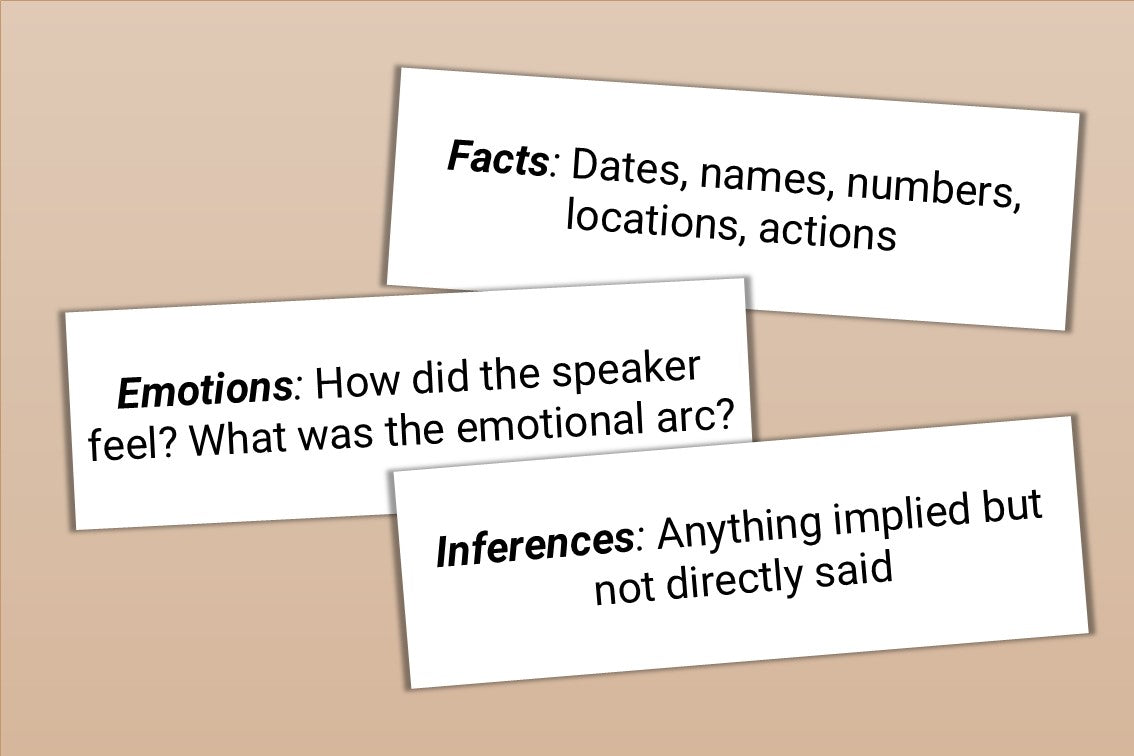Purpose
This exercise helps delegates to understand the importance of acknowledging the view of a person they are having a conversation with irrespective of whether they agree with it or not. The exercise helps to create a vivid example which can then be discussed and explored further.
The main aims are:
- Develop rapport through having a friendly conversation as opposed to being antagonistic with opposing views
- Improve listening skills
- Learn to listen and show that you are listening
Objective
Go through a series of conversations based on the instructions given and then compare the quality of these conversations to see how one conversation differs from the other.
What You Need
- Optionally, you can provide the example conversations shown below. Alternatively, you can just read though them to demonstrate.
Setup
- Divide the delegates in to pairs. If you have an odd number of delegates pair one person with yourself.
Stage 1:
- Explain that each pair needs to pick a topic. It doesn’t matter if groups pick the same topic but it is better if they don’t so they don’t over hear from other groups.
- The topic should be safe in that it doesn’t lead to heated emotional conversations such as politics or religion. They should choose a topic that they can easily roleplay opposing views. An example topic is buying digital books versus buying paper books.
Stage 2:
- Explain that each pair needs to discuss the topic by choosing two opposing views. The first person should make a statement and the other person should make a counter statement and they continue one statement at a time until instructed to stop.
- Ask them to start the conversations and allow them to continue for 2 minutes.
- Here is an example conversation:
- Person A: Digital books are cheaper.
- Person B: Your device may go obsolete and you could lose the book.
- Person A: You can carry thousands of books on your device with no extra weight.
- Person B: These days with all that’s going on, we are likely to read very few books anyway, so why have thousands on the go.
- Person A: You can search, you can translate, you can lookup terms, you can take notes.
- Person B: Nothing beats the smell and feeling of a paper book in your hands.
Stage 3:
- At this stage, the first person should make a statement. The second person should start with, “So, what you mean is…” and continue by paraphrasing the statement the other person just said.
- The first person should then say, “Yes, that’s what I mean”, if the paraphrase matches what he intended to communicate. Otherwise he should correct accordingly.
- Once a person hears, “Yes that’s what I mean”, it is his turn to make a statement. This could be related or unrelated to the previous statement. This time the other person should paraphrase.
- This then continues until stopped by the trainer.
- Allow the conversations to continue for 4 minutes.
- Here is an example conversation:
- Person A: Digital books can be purchased instantly anywhere you are and you can start reading them right away.
- Person B: So, what you mean is that I can just order the book, get it on my device instantly, open it and start reading it, even when I am traveling.
- Person A: Yes, that’s what I mean.
- Person B: You can recall the contents of a paperback much more than a digital one. If you need to learn something paperbacks are better.
- Person A: So what you mean is that by reading a paperback I am more likely to remember the contents than if I was reading it on a digital device.
- Person B: Yes, that’s what I mean.
Stage 4:
- Ask each group to discuss what they went through. Ask them to compare their two conversations—one with opposing views and one with paraphrasing. How did they feel during the first one? How about the second conversation?
- Allocate 10 minutes for this part.
- Bring back everyone together and follow with a discussion.
Timing
Explaining the Exercise: 5 minutes
Activity: 5 min Stage 1 + 2 min Stage 2 + 4 min Stage 3 + 10 min Stage 4 = 21 minutes
Group Feedback: 10 minutes
Discussion
How did it feel to have a conversation where your partner kept stating his views as opposed to acknowledging yours? What was it like to be paraphrased? When having conversations, do you feel that you must rush in to state what you think about an issue as opposed to seeking to understand and acknowledging the view of the other person? What was the most important lesson you learned in this exercise?
Soft Skills Training Materials
Get downloadable training materials
Online Train the Trainer Course:
Core Skills
Learn How to Become the Best Trainer in Your Field
All Tags
Training Resources for You

Course Design Strategy
Available as paperback and ebook

Free Training Resources
Download a free comprehensive training package including training guidelines, soft skills training activities, assessment forms and useful training resources that you can use to enhance your courses.

Our Comprehensive Guide to Body Language

Train the Trainer Resources
Get Insights - Read Guides and Books - Attend Courses
Training Materials
Get downloadable training materials on: Management Training, Personal Development, Interpersonal Development, Human Resources, and Sales & Marketing














Leave a comment
All comments are moderated before being published.
This site is protected by hCaptcha and the hCaptcha Privacy Policy and Terms of Service apply.